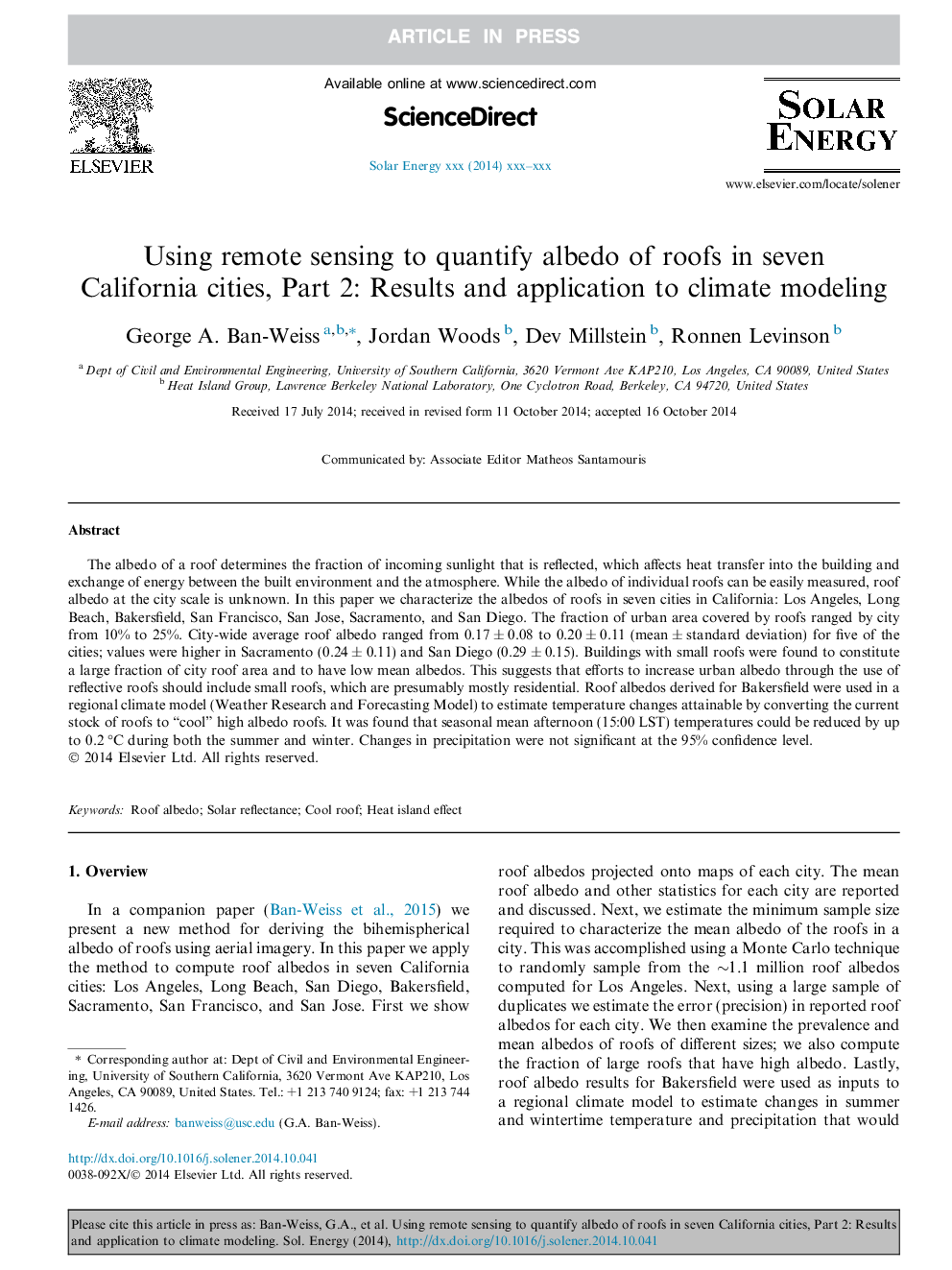| Article ID | Journal | Published Year | Pages | File Type |
|---|---|---|---|---|
| 7938123 | Solar Energy | 2015 | 15 Pages |
Abstract
The albedo of a roof determines the fraction of incoming sunlight that is reflected, which affects heat transfer into the building and exchange of energy between the built environment and the atmosphere. While the albedo of individual roofs can be easily measured, roof albedo at the city scale is unknown. In this paper we characterize the albedos of roofs in seven cities in California: Los Angeles, Long Beach, Bakersfield, San Francisco, San Jose, Sacramento, and San Diego. The fraction of urban area covered by roofs ranged by city from 10% to 25%. City-wide average roof albedo ranged from 0.17 ± 0.08 to 0.20 ± 0.11 (mean ± standard deviation) for five of the cities; values were higher in Sacramento (0.24 ± 0.11) and San Diego (0.29 ± 0.15). Buildings with small roofs were found to constitute a large fraction of city roof area and to have low mean albedos. This suggests that efforts to increase urban albedo through the use of reflective roofs should include small roofs, which are presumably mostly residential. Roof albedos derived for Bakersfield were used in a regional climate model (Weather Research and Forecasting Model) to estimate temperature changes attainable by converting the current stock of roofs to “cool” high albedo roofs. It was found that seasonal mean afternoon (15:00 LST) temperatures could be reduced by up to 0.2 °C during both the summer and winter. Changes in precipitation were not significant at the 95% confidence level.
Related Topics
Physical Sciences and Engineering
Energy
Renewable Energy, Sustainability and the Environment
Authors
George A. Ban-Weiss, Jordan Woods, Dev Millstein, Ronnen Levinson,
